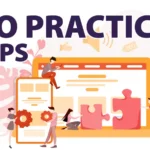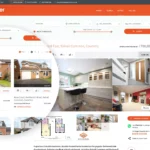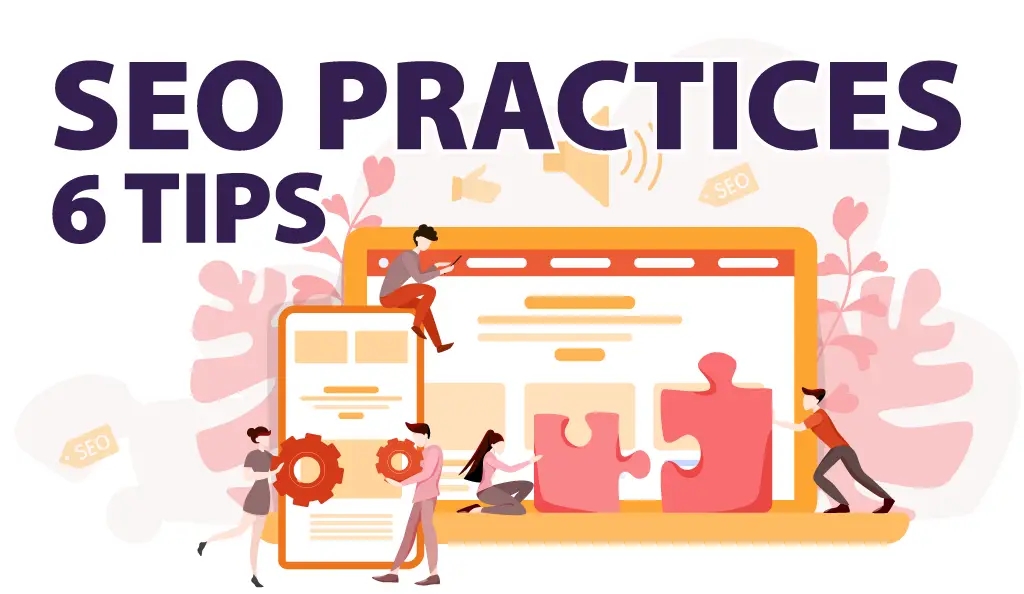
Search engine optimisation (SEO) is the practice of strategically optimising website pages to help search engines understand their content and rank them accordingly. This article focuses on best practices for SEO on individual site pages.
Whether you are working with a new website or updating an old one, you want your site’s pages to be as search-engine friendly as possible. The primary goal of SEO on individual pages is to surface the most relevant information and increase visitor intent to take actions such as visiting your Contact Us page, buying your products, or signing up for your newsletter.
Read on to learn more about these 6 tips for the best SEO practices on individual website pages
Pages should have a unique focus keyword
The first step for optimising any page for search engines is to choose a primary focus keyword for that page. You should choose a keyword that represents the page’s content and offers value to your visitors. It should be a keyword that your potential customers would be searching for if they are looking for your product or service.
The primary focus keyword would normally be a number of words rather than just one, so for example, your customers might be searching for “best estate agent in {city}”, or “property portfolio management companies”.
A good place to help identify keywords is to find out what keywords your competitors are using. Try a few searches on google and see if your competitors are seen in the top three results. Study their pages and see what text is prominent on the page.
Once you have some keyword ideas, identify the primary keyword and two or three further secondary keywords.
You can now start to include these keywords on your page. You should use them in the URL*, title tag, meta description, headers, and throughout the content. However, don’t overuse them as this can negatively impact your SEO efforts.
*If you do change an existing URL make sure you redirect the old URL to the new one. If you don’t know how to do this, your web developer should be able to help.
Make sure the page title and heading match
Each page on your website should have a title, a heading (H1) and a number of sub-headings (H2, H3, H4 etc). The title and heading are visible to potential visitors who scan through the results of a search, or to those who visit your site directly.
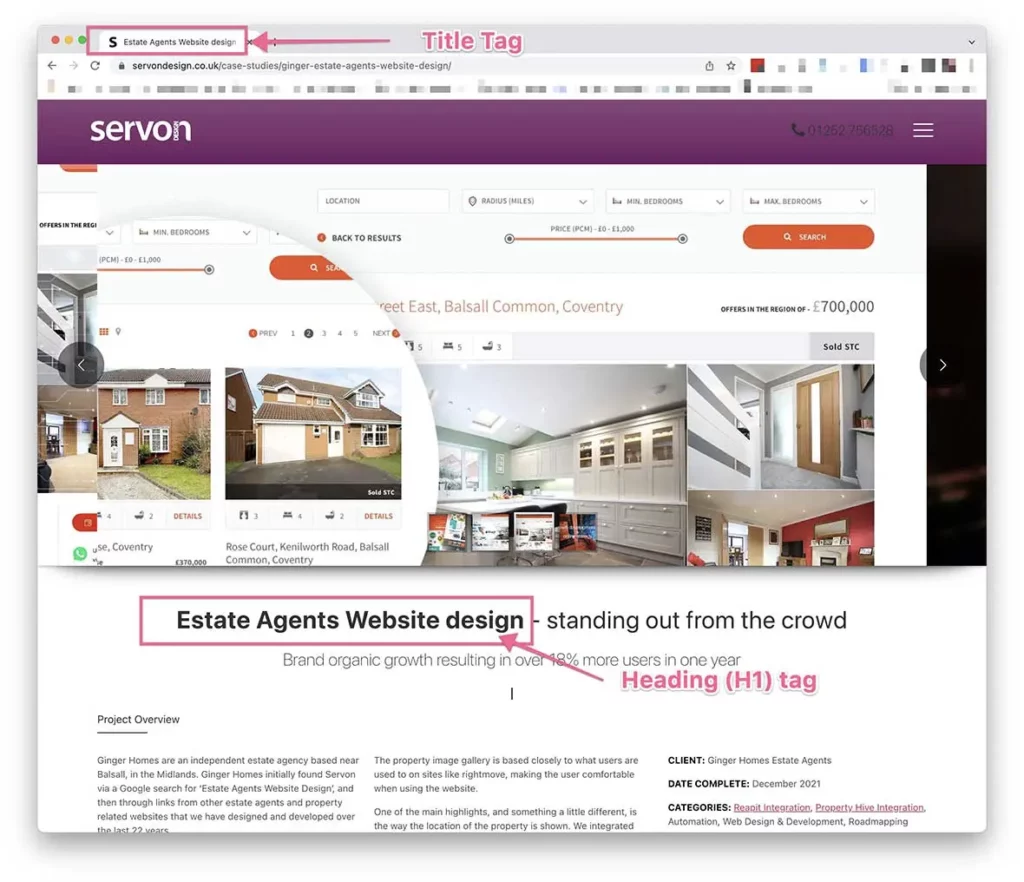
If they are compelling enough, they can inspire a click, and ultimately a conversion. The title and header of each page should match.
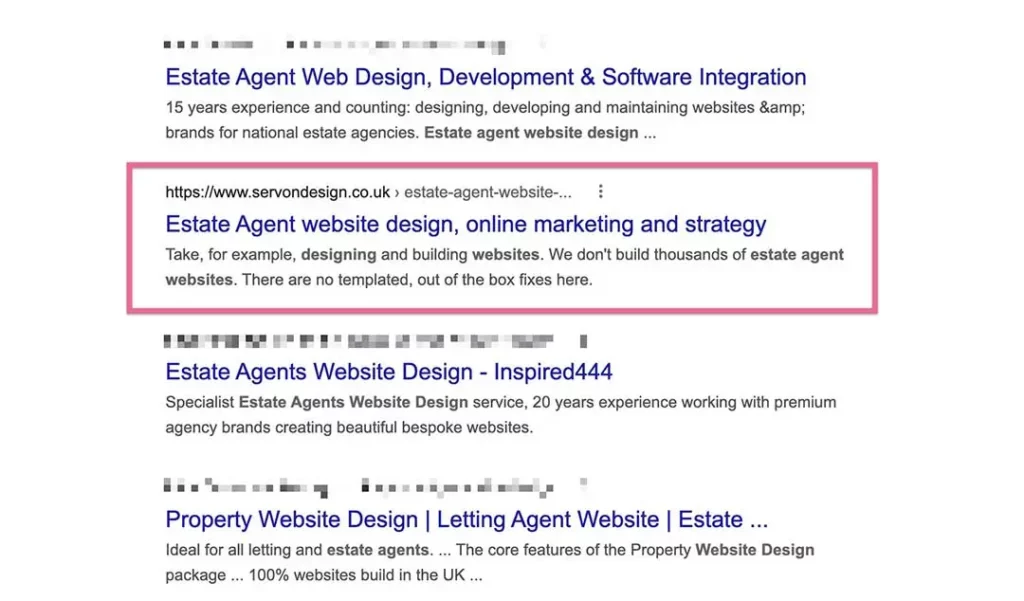
Meta descriptions featuring the keyword
A meta description is a short paragraph that most of the time shows up below your page title in the search results. We say most of the time as it is not guaranteed by Google to show this. If written well, it could entice your reader to click through to your site.
The meta description should include your primary keyword. If you include only a few words in the meta description, you can use the rest of the space to write a compelling call to action. This, in turn, can drive more clicks to your site. While the meta description is not as important as it once was, it is still a great place to include your focus keyword to help with click-through rates.
The length of a description tag is not based on the number of letters or characters, but on the pixel width. Google typically displays up to 155-160 characters in the description tag on its search engine results pages (SERPs). However, this pixel width can vary based on the characters used, so it’s important to focus on creating a clear and concise description that accurately summarises the content of the page and entices users to click through to your website. It’s recommended to keep the description tag under 155-160 characters to ensure it is fully displayed in the SERPs.
Featured image specific to the keyword
A picture is worth a thousand words. Visual content is one of the main things that search engines use to determine the relevancy of a page.
You can help improve your chances of ranking higher by including one or more compelling images on the page that contains your focus keyword. The image you choose should be directly related to the content on the page and the focus keyword you want to rank for.
Ideally, you’ll use an original image that you have the rights to, or that you have permission to use. If you use an image with a Creative Commons licence, make sure you attribute the creator. You can do this by including their name and the image’s title in the alt text of the image.
There is no specific number of images that should be on a webpage to help with SEO. The key is to use images effectively and in a way that supports the content of the page. Here are some guidelines for using images on a webpage to improve SEO:
- Use high-quality images that are relevant to the content of the page.
- Optimise the file size of the images to ensure fast page load times.
- Use descriptive file names and alt tags to help search engines understand what the images are about.
- Use captions to provide context for the images and enhance the user experience.
- Use images to break up large blocks of text and improve the overall visual appeal of the page.
- Avoid using too many images that can slow down page load times and detract from the content.
Ultimately, the number of images on a webpage will depend on the specific needs of the page and the type of content being presented. As long as images are used effectively and in a way that supports the content of the page, they can help improve the overall SEO of the page.
URL structure for best SEO practices
URLs are important for SEO as they provide context to both search engines and users about the content of the page. Here are some criteria to follow when creating URLs for SEO:
- Keep URLs short and descriptive: Shorter URLs are easier to read and remember, while descriptive URLs give users and search engines an idea of what the page is about.
- Use keywords in the URL: Including relevant keywords in the URL can help search engines understand the content of the page and improve its visibility in search results.
- Use hyphens to separate words: Hyphens are preferred over underscores as they are easier to read and separate words more clearly.
- Use lowercase letters: URLs are case-sensitive, but it’s best practice to use lowercase letters as it’s easier to read and reduces the risk of errors.
- Avoid using special characters: Characters like %, &, $, and ?, can cause issues with URL encoding and may be difficult for search engines to crawl.
- Make sure URLs are unique: Each URL on your website should be unique to avoid confusion and potential penalties for duplicate content.
- Use a logical directory structure: Use subfolders to organise your content in a logical manner, making it easier for users and search engines to navigate your site.
By following these criteria, you can create SEO-friendly URLs that accurately describe your content and help your website rank higher in search engine results.
Rich content with clear calls-to-action
Rich content with clear calls-to-action can be very beneficial for a website in a number of ways:
Increased engagement: Rich content, such as images, videos, and infographics, can make the website more visually appealing and engaging for users. This can lead to longer pageviews and a lower bounce rate.
Improved user experience: Clear calls-to-action can help guide users through the website and encourage them to take specific actions, such as filling out a contact form or making a purchase. This can lead to a more positive user experience and higher conversion rates.
Better search engine visibility: High-quality content and clear calls-to-action can improve the overall relevance and authority of the website, making it more likely to rank higher in search engine results pages.
Increased social sharing: Rich content with clear calls-to-action can be more shareable on social media, leading to increased visibility and referral traffic to the website.
Improved brand perception: High-quality content and clear calls-to-action can help establish the website as a trusted source of information and improve the overall perception of the brand.
In summary, rich content with clear calls-to-action can improve engagement, user experience, search engine visibility, social sharing, and brand perception for a website.
Wrapping up
The importance of SEO on a webpage lies in its ability to improve the visibility and relevance of the page to search engines. By optimising various elements of the page, you can increase the likelihood that it will rank higher in search engine results pages, resulting in more traffic, leads, and conversions. Additionally, effective SEO can improve the user experience and help establish your brand as a trusted source of information.
The amount of time it takes to optimise a webpage for SEO can vary depending on a number of factors, including the size of the website, the level of optimization needed, and the experience of the SEO professional. Generally speaking, it can take anywhere from a few hours to several weeks or even months to fully optimise a webpage.
In some cases, small changes can be made to a webpage to improve its SEO quickly, such as optimising the title tag, meta description, and header tags. However, more in-depth optimizations, such as improving the content, internal linking, and multimedia elements, can take longer to implement.
It’s important to keep in mind that SEO is an ongoing process and not a one-time task. Even after a webpage has been optimised, it will need to be regularly reviewed and updated to ensure that it continues to perform well in search engine results pages.
Overall, the timeline for optimising a webpage will depend on a number of factors, but it’s important to take the time to do it right in order to achieve the best possible results.
Hopefully, these 6 tips for the best SEO practices on individual website pages will support your broader SEO strategy.
If you liked this post on Best SEO Practices you might be interested in:
Book a No-Obligation 30 minutes call with our digital marketing experts
Our 30 minute “getting-to-know-you” phone call is designed to see if your project is something we are able to help with. Be prepared to discuss your business fundamentals, your hopes & expectations of your project and your current business challenges. Schedule a call now.


